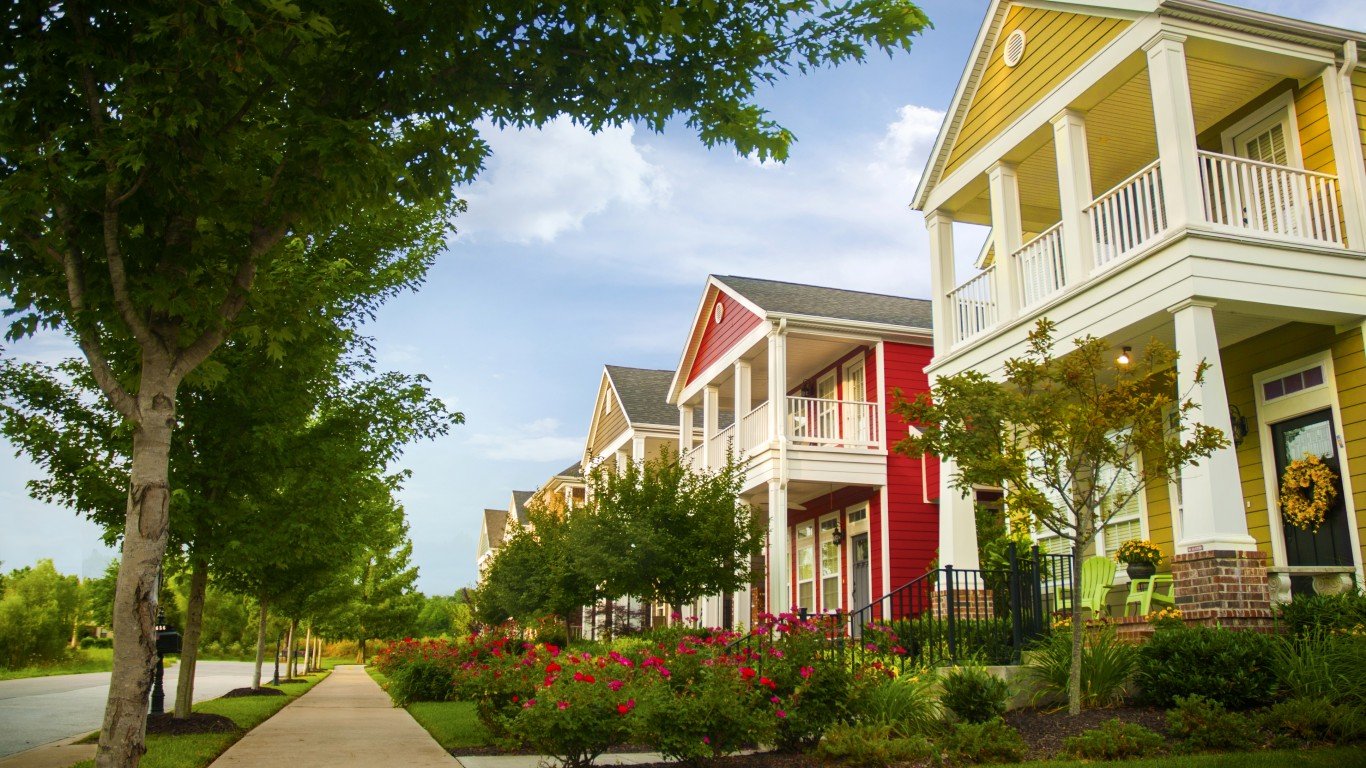

The S&P CoreLogic Case-Shiller national home price index rose 5.5% year over year in September to a non-seasonally adjusted (NSA) index of 205.82. That’s 0.1 percentage points higher than the month-over-month increase posted in August.
September marks the second consecutive month that home prices have grown more slowly month over month. The national index hit a 20-month low of 205.81 in August.
In all U.S. cities included in the 20-city home price index, September house prices were flat year over year, with 12 of 20 also posting NSA month-over-month increases. Las Vegas (up 13.9%), San Francisco (up 9.9%) and Seattle (up 8.4%) posted the largest year-over-year gains. Phoenix (up 0.8%) posted the largest month-over-month increase. Seattle (down 1.3%), San Diego (down 0.3%), and Los Angeles (down 0.2%) declined the most month over month.
The S&P CoreLogic Case-Shiller NSA home price indexes for September increased by 5.1% year over year for the 20-city composite index and by 4.8% for the 10-city composite index. Economists had estimated an NSA year-over-year gain in the 20-city index of 5.3%.
The Case-Shiller index tracks prices on a three-month rolling average. September represents the three-month average of July, August and September prices.
Average home prices for September remain comparable to their levels in the winter of 2007.
The S&P index committee chair, David M. Blitzer, said:
Home prices plus data on house sales and construction confirm the slowdown in housing. The S&P CoreLogic Case-Shiller National Index showed a 5.5% year-over-year gain, weaker for the second month in a row as 16 of 20 cities showed smaller annual price gains. On a monthly basis, nine cities saw prices decline in September compared to August. In Seattle, where prices were rising at double-digit annual rates a few months ago, prices dropped last month. The few places reporting larger gains including some of the cities which had the biggest gains and largest losses 10 years ago: Las Vegas, Phoenix and Tampa.
Sales of both new and existing single family homes peaked one year ago in November 2017. Sales of existing homes are down 9.3% from that peak. Housing starts are down 8.7% from November of last year. The National Association of Home Builders sentiment index dropped seven points to 60, its lowest level in two years. One factor contributing to the weaker housing market is the recent increase in mortgage rates. Currently the national average for a 30-year fixed rate loan is 4.9%, a full percentage point higher than a year ago.
Compared to their peak in the summer of 2006, home prices are now 0.5% higher on the 10-city index. On the 20-city index home prices are now 3.5% higher. Since the low of March 2012, home prices are up 55.2% and 59.4% on the 10-city and 20-city indexes, respectively. On the national index, home prices are now 11.5% above the July 2006 peak and 53.6% higher than their low-point in February 2012.
Sponsored: Want to Retire Early? Start Here
Want retirement to come a few years earlier than you’d planned? Orare you ready to retire now, but want an extra set of eyes on your finances?
Now you can speak with up to 3 financial experts in your area for FREE. By simply clicking here you can begin to match with financial professionals who can help you build your plan to retire early. And the best part? The first conversation with them is free.
Click here to match with up to 3 financial pros who would be excited to help you make financial decisions.
Thank you for reading! Have some feedback for us?
Contact the 24/7 Wall St. editorial team.
 24/7 Wall St.
24/7 Wall St.